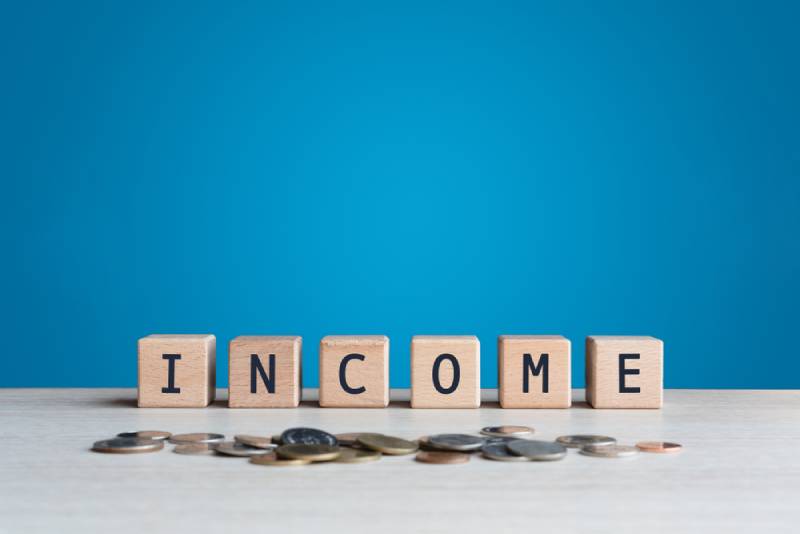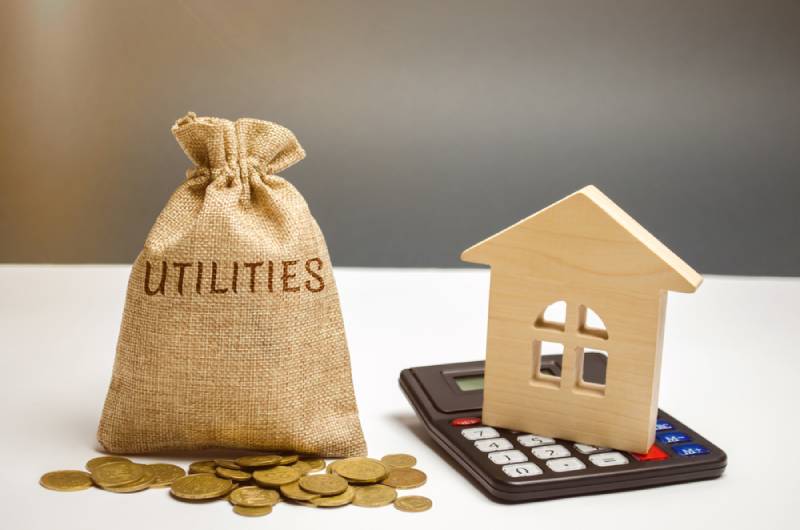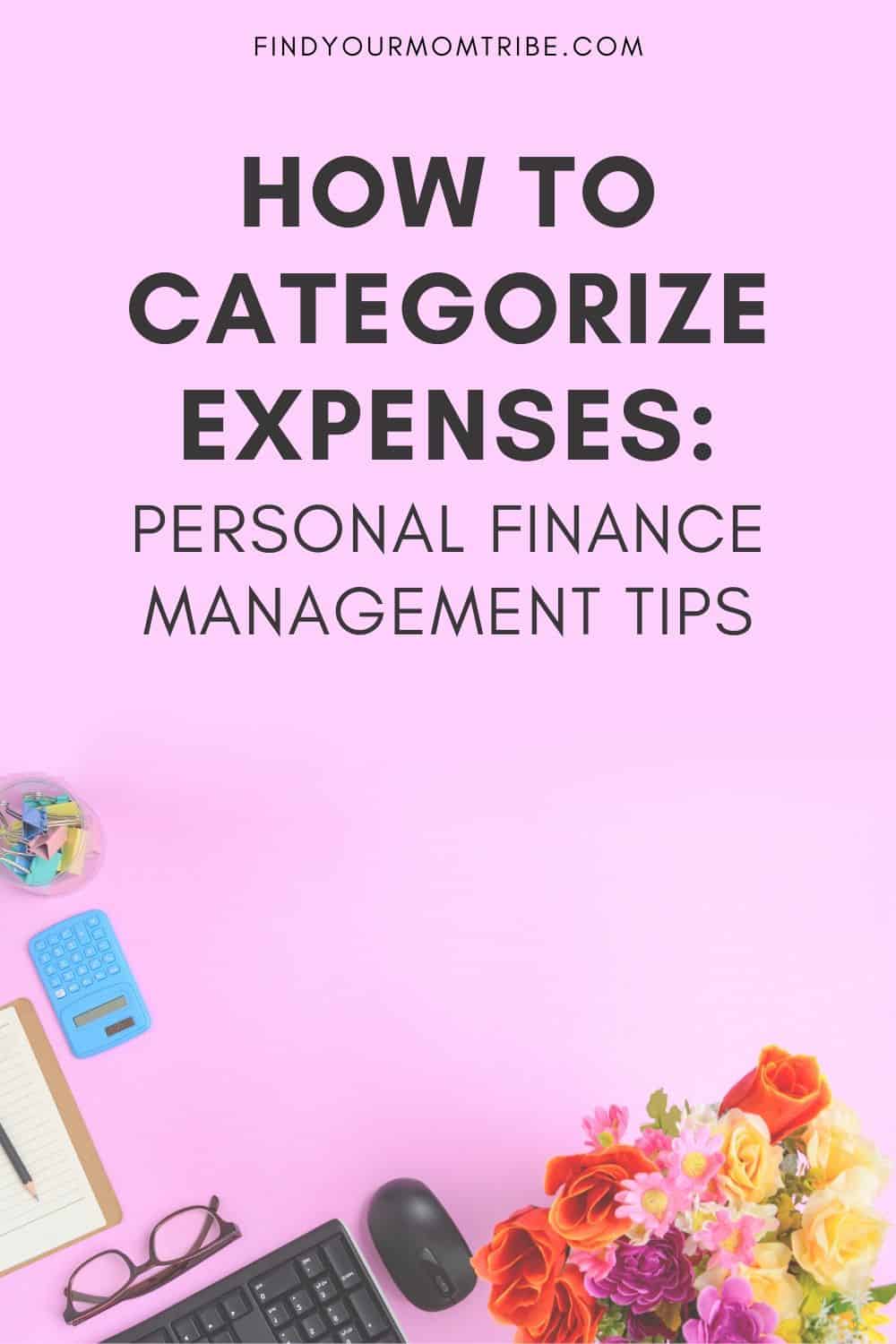Learning how to categorize expenses is the next thing to do after tracking your spending and determining where your money goes every month.
Now, you have a list of your expenses and you want to break them down into various categories. The reason for this categorization is to enable you to create a guideline for your monthly spending.
A budget is vital for a precise allocation of money for future expenses.
Categorizing your expenses and assigning money differently to each category ensures that you choose important expenses to spend your money on and meet your basic needs.
To make a realistic and precise budget, you need to be more detailed when creating spending categories.
This is to allow you to have a clear picture of what you are spending on every month.
You can categorize your budget in two ways.
You can either create a master category to cover a group of expenses, such as creating a “Utilities” category instead of dividing it into smaller categories like electricity, water, cell phone, gas, sewerage, etc.
Or the second option is to break down each category into specific expenses and allocate money precisely to specific needs.
For instance, you can create categories for “Groceries,” “Eating out,” and “Kids’ lunches” instead of just creating a “Food” category.
Some people are of the opinion that creating master categories save time and simplify their budget.
However, a detailed budget will help you allocate funds for specific needs and make it easier for you to make a budget calendar to track your spending.
For those who are just starting to make budgets, a detailed breakdown of categories is recommended so you would know exactly what you are spending on.
Nonetheless, determining the best method will depend on individual preference. Experienced budgeters can actually make use of a combination of the two methods.
Here’s a list of recommended expense categories you can include in your personal budget. However, there are two ways for you to get the most from this list.
You can either go through the list to identify categories that apply to you, then add them to your budget spreadsheet or make a list of all your monthly expenses and cross-check with this category list to see if there’s anything you are missing.
1. Income
There are several means of generating income.
At this point, you need to think of all the things you do that bring in money. Only guaranteed sources of income should be listed in your budget.
Some sources that may apply to you are salary or wages, side hustles, tax refunds, predictable work bonuses, investment income, child support, alimony, etc.
RELATED: Paycheck Budgeting: 7 Best Ways To Make The Most Out Of Your Wages

2. Utilities
Utilities are part of daily living.
There are several expenses that fall under this category.
Electricity, natural gas, internet, trash, cable or satellite, phone, water, and sewerage belong here.

3. Savings
Your future needs should also be included in your budget.
Many people do not consider this savings category as part of their budget, but there is a need to plan for it too.
Record your monthly savings for a future expense as a bill payment you owe yourself.
There are several categories to consider under savings such as emergency funds, sinking funds, retirement funds, short term savings, children’s future, family vacation, etc.

4. Housing
You can’t afford to not have a roof over your head, and that makes this budget category very essential. Housing expenses are not limited to mortgage payments only.
You have to consider the household maintenance and repairs too. There’s also the rent payment and renter’s insurance for people renting a space.
The expenses to consider as part of housing include mortgage or rent, maintenance and repairs, home improvement, property tax, HOA fees, homeowner’s insurance, renter’s insurance, etc.

5. Transportation
The amount you spend on transportation depends entirely on where you reside.
Expenses that can come under this category include car payment, gas, maintenance and repairs, tag and title fees, auto insurance, parking, public transportation, etc.

6. Food
Food-related expenses constitute a major part of some people’s budget while others spend less by mastering coupons.
It’s important to break down this category as much as you can.
RELATED: Budget Meal Planning: 11 Strategic Tips For Money Saving
You can have groceries, coffee dates, eating out, and kids’ lunches as part of your food-related categories.
Feel free to add other categories that suit your lifestyle.

7. Debt
In order to assess your financial situation accurately, it is necessary that you break down this category as much as possible.
You can even include your creditor’s name to help you track every debt.
Examples of debt categories to include in your budget are credit cards, instalment agreements, student loans, personal loans, medical bills, etc.
RELATED: Mistakes When Getting Out of Debt: 9 Mistakes To Avoid

8. Insurance and Health Care
Insurance is an essential part of future planning that should be included in your budget.
Consider breaking down this category into life insurance, disability insurance, out-of-pocket medical expenses, supplementary insurance, prescription costs, health insurance, dental insurance, and vision insurance.

9. Personal Care
This category is vital for every family; however, the cost is dependent on the number of persons in the family.
Personal expenses such as clothing and shoes, salon costs, hair care products, laundry supplies, dry cleaning, gym membership costs, recreation equipment, as well as personal hygiene expenses like toiletries, perfume, deodorant, shaving cream, and other personal use items fall under this category.
If you have a baby, child care necessities like diapers should be considered.

10. Leisure and Entertainment
It is completely fine to spend some money on things that give you joy.
It would be difficult to work on keeping your budget and also save some money if you keep away every form of fun. It is important to balance things out.
Remember that life is short, so make sure to enjoy it while it lasts. But also be sure not to overspend in this category.
Leisure and entertainment expenses may include movies or concerts, vacation or travel expenses, crafts or hobbies, parties, subscriptions, and charity.

11. Education
The cost of the first few years of your child’s education may be minimal; however, this depends on the school your child attends.
The various expenses that can cost you in this category include registration fees, tuition, textbooks, dress code or uniform, school supplies, sports, field trips, extracurricular activities, etc.

12. Miscellaneous
This category is often included by most people to cover expenses that do not fit into any of the above-listed categories.
However, it is also important to break it down so you can easily track your spending. Listing it out as just miscellaneous will make it difficult to track the expenses in the category.
Try keeping a 30-day log of your spending to identify expenses that belong here. Also, keep your categories realistic and small.
Examples of miscellaneous expenses are postage, kid’s toys, electronics maintenance, pet care, holiday spending, etc.
Without a budget, it’s quite easy to blow your earnings and difficult to tell what you are spending on.
Categorizing your expenses helps you track every dollar to specific expenses.
With this information right before you, you’ll be aware of your finances and can easily check your spending.
You also have the chance to allocate more money to the payment of debts and savings.

Additional Personal Finance Management Tips
Some tips that can help you keep a great budget include:
1. Spend Less Than You Earn
Everyone knows they need to spend less than they earn, but doing it is a lot harder.
So many people in America live paycheck to paycheck; however, escaping this lifestyle is vital for personal financial freedom.
To spend less, learning to budget is key. It doesn’t mean you stop doing the things you love. You just need to create a plan for your money.
A productive way to do this is to employ the percentage rule to your spending.
You can allocate 50% of your earnings to your core expenses like food, housing, bills, and other fixed expenses.
30% can go to other important expenses or whatever you like, while 20% should go to savings.
You can make adjustments to suit your lifestyle and specific needs.

2. Note Indispensable Expenses
While making your budget, it is important to identify expenses that make up your core needs and those you can easily leave out – that is, the stuff you won’t spend your last money on.
This is to ensure that you make plans for things you can’t leave out first, before considering others.
After listing all your expenses, start marking your core needs and the dispensable expenses.
Ensure that you put the core needs first on your budget. You can leave out others if there’s no funds left to cover them.
Things that can constitute your necessities are housing, transportation, utilities, food or groceries, insurance, tuition and other education-related costs, basic clothing, debts, savings, etc.
Other expenses that can come in but aren’t core necessities are entertainment, eating out, memberships, subscriptions, pet expenses, vacations, etc.

3. Pay Yourself First
One important personal finance tip is to pay yourself before doing anything else. When you pay yourself, you set money aside for future plans.
It’s a lot easier to save first and then see how to plan with what’s left because once you have sent a particular sum of money into your savings account, you are less likely to touch it.
If you put your savings after other expenses, at the end of the month, you may not have money left to save.
You can automate transfers to your savings account from your checking account every month to make it easier.
RELATED: How To Balance A Checkbook: The Best Beginner’s Guide To Finance

4. Set Financial Goals
To achieve personal financial goals, you need to know the goals you have to work towards.
A clear goal keeps you motivated and helps you think of ways to accomplish it faster. Your goals need to be realistic and achievable.
If you are just starting to think of personal financial goals, you can start with small short-term goals first.
Think of what you would like to achieve in the next three months or in a year’s time. You can set long-term goals too and track your progress.

6. Pick Up A Side Hustle
There are lots of jobs you can do from home to earn more money.
There is no limit to the amount of money you can make from side hustles. There’s no fixed salary, so you can earn as much as you work.
You can put in few hours of work every day, depending on your schedule, into selling on Amazon, freelance writing, blogging, proofreading, telemarketing, consulting, becoming a virtual assistant, becoming a translator (if you are bilingual) and so many other jobs you can do from home.
As a stay-at-home mom, you can also decide to provide child care services for other working parents if you can comfortably take care of another child in addition to yours.
As a mom, you are in a good position to care for other people’s children. There are also various kinds of small businesses you can do.
Find out what you are good at and put it to use. This way, you can make a lot of money every month to add to your budget.

7. Avoid Credit Card Debt
A credit card is not free money.
Debts can increase over time, and if you don’t pay when you should, you’ll have to pay a late fee.
With a realistic budget, you can plan for every expense and pay for your purchases with cash.
However, if you choose to use a credit card, ensure you pay off debts early and monitor your credit score.

Wrap Up
Overall, the goal is to spend less and save more.
These personal finance management tips can help you achieve that if you just don’t read and pass.
It may not be easy to apply all at once; however, a step by step application of these tips can help you organize your finances and achieve financial freedom.
Like this article? Please share or pin it for later. You can also stay in the loop and follow us on Facebook, Instagram or Pinterest.

Disclosure: This post contains affiliate links. Please see our full disclosure for more info.

